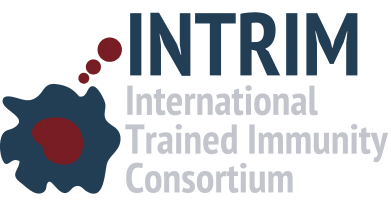Trained immunity as a mechanistic basis for comorbidities
Penn Dental Medicine, University of Pennsylvania, USA
Research topic
Trained immunity can be initiated in the bone marrow through long-term adaptations (metabolic, epigenetic, and transcriptional) in hematopoietic stem and progenitor cells (HSPCs), the precursors of differentiated innate immune cells. HSPCs can sense peripheral inflammation or infection and adapt through increased proliferation and skewing toward the myeloid lineage. Although trained immunity represents an evolutionarily conserved beneficial response that promotes host survival upon re-infection, it may also promote maladaptive immune responses that aggravate immune pathologies, thus contributing to the high prevalence of chronic inflammatory diseases.
In this context, the inflammation-induced adaptation of hematopoietic and myeloid progenitor cells towards heightened myelopoiesis may perpetuate inflammation in chronic inflammatory disorders by generating a positive-feedback loop between inflammation-adapted hematopoietic progenitor cells and the inflammatory disorder. Moreover, we reason that maladaptive training of hematopoietic progenitor cells may provide a mechanistic link for comorbidities, such as the enhanced risk of systemic inflammatory diseases in patients with periodontitis.
Periodontitis, a local inflammatory disease leading to the destruction of the tissues that surround and support the dentition, is epidemiologically linked to increased risk for certain systemic inflammatory/autoimmune diseases (e.g., cardiovascular disease, rheumatoid arthritis, psoriasis, inflammatory bowel disease, type 2 diabetes, Alzheimer’s disease, and non-alcoholic fatty liver disease). However, cause-and-effect relationships have yet to be documented.
Our group aims at investigating the role of trained immunity in the aforementioned pathologies and as a mechanistic basis for inflammatory comorbidities.
Group leaders
- George Hajishengallis, DDS, PhD, Thomas W. Evans Centennial Professor
Group members
- Xiaofei Li, PhD
- Tetsuhiro Kajikawa, DDS, PhD
- Jong-Hyung Lim, PhD
- Hui Wang, PhD
Selected Publications
- Hajishengallis G et al, Cell Host & Microbe, 10:497-506 (2011).
- Eskan MA et al. Nat Immunol, 13:465-473 (2012).
- Hajishengallis et al, Nat Rev Microbiol, 10:717-725 (2012).
- Moutsopoulos NM, et al. Sci Transl Med, 229ra40, 2014.
- Maekawa et al, Cell Host Microbe, 15:768–778 (2014).
- Maekawa T et al. Nat Commun, 6:8272 (2015).
- Shin J et al. Sci Transl Med, 7:307ra155 (2015).
- Hajishengallis G, Nature Rev Immunol. 15: 30-44 (2015).
- Mitroulis et al, J Clin Invest, 127:3624-3639 (2017).
- Hajishengallis G et al, Nat Immunol, 18:1288-1298 (2017).
- Dutzan N et al, Sci Transl Med, 10:eaat0797 (2018).
- Lamont RJ et al, Nat Rev Microbiol, 16:745–759 (2018).
- Mitroulis et al, Cell, 172:147–161 (2019).
- Penkov S et al, Trends Immunol, 40:1-11 (2019).
- Wang et al, Cell Rep. 26:1614-1626.e5 (2019).
- Kourtzelis et al, Nat Immunol, 20:40-49 (2019).
- Chavakis T, Mitroulis I, Hajishengallis G, Nat Immunol, 20:802-811 (2019)
Financial support
US National Institutes of Health (DE015254, DE024153, DE024716, DE026152, AI068730)
